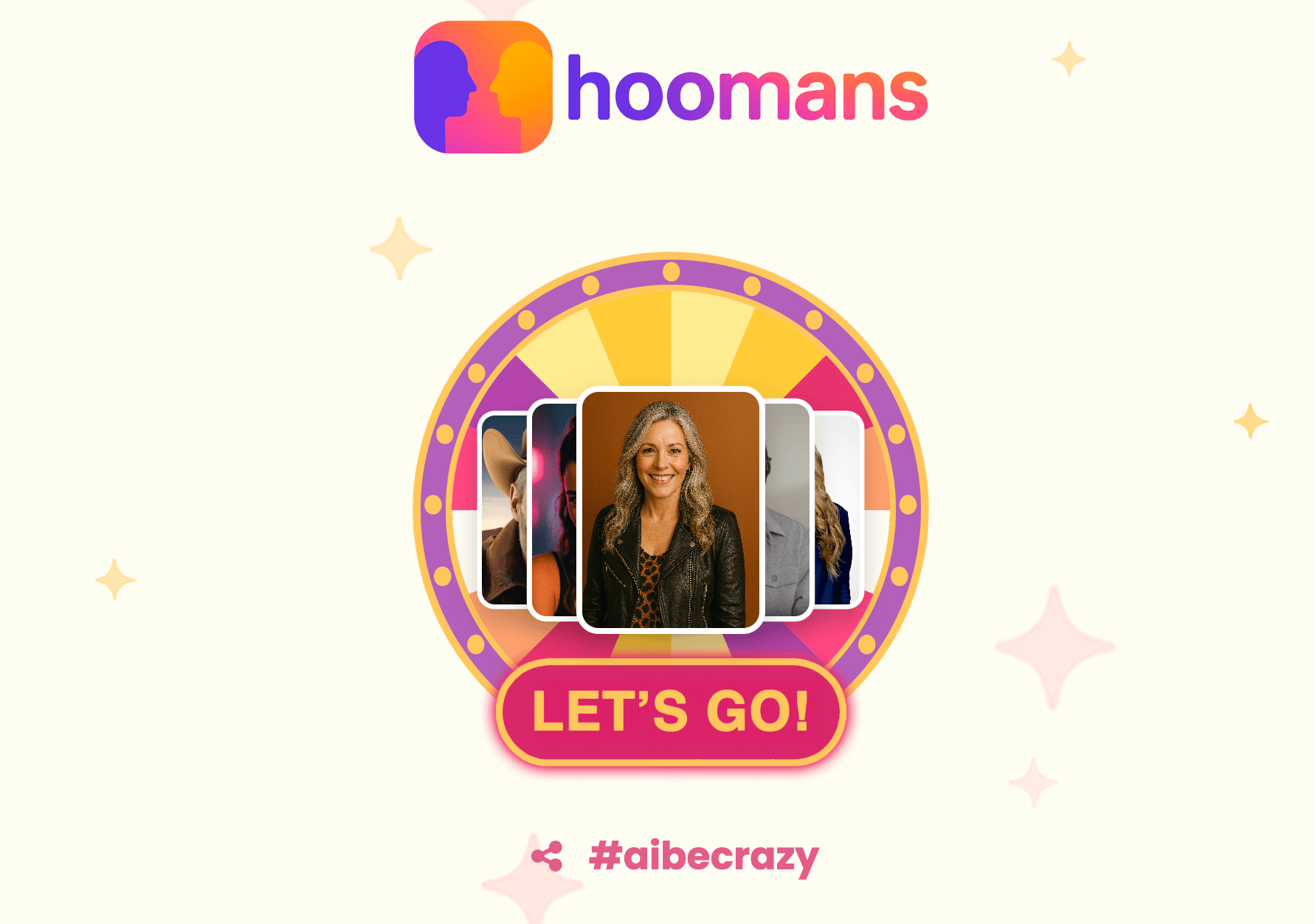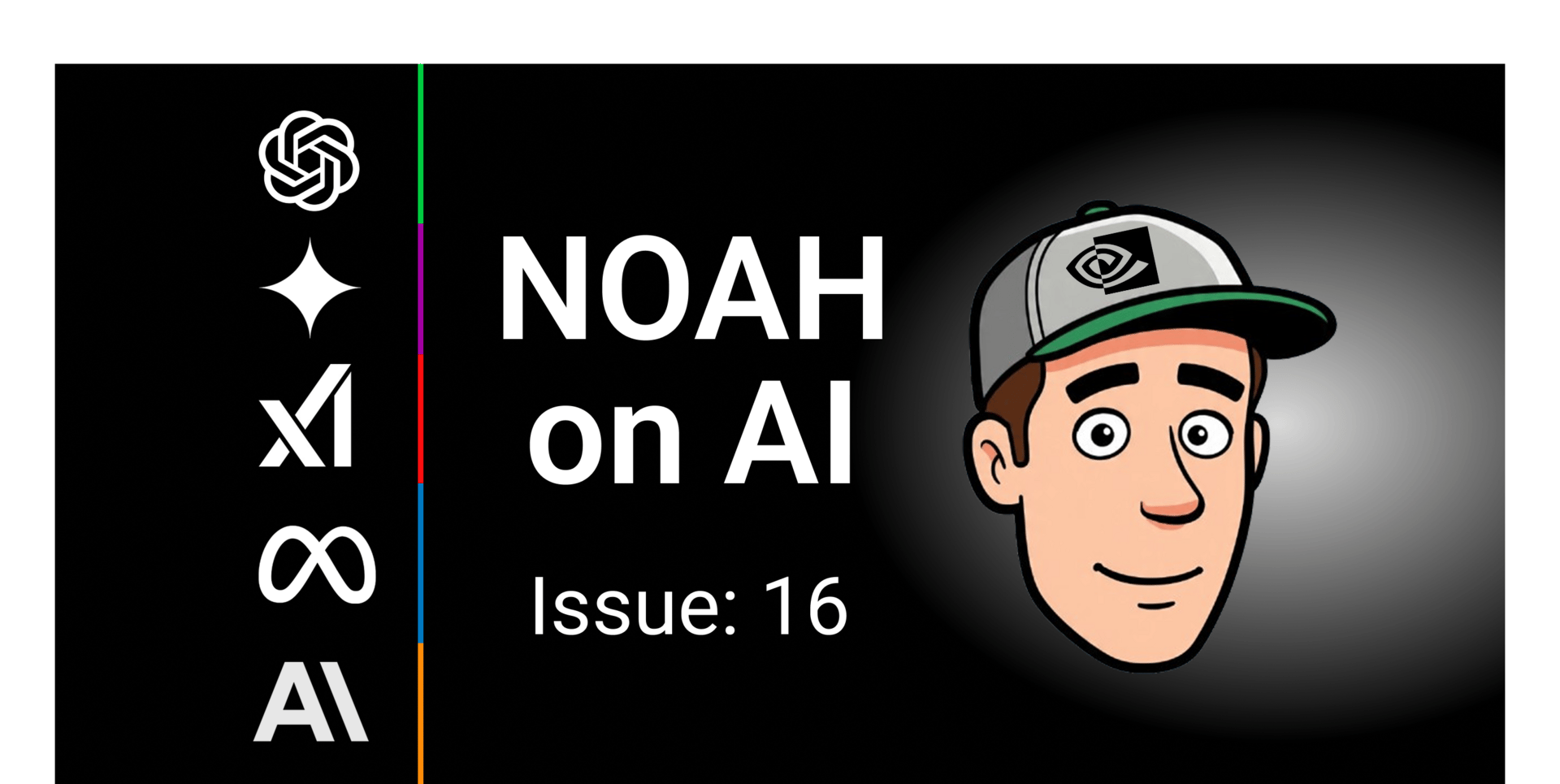In partnership with
🌟 Editor's Note: Recapping the AI landscape from 10/21/25 - 10/27/25.
🎇✅ Welcoming Thoughts
Welcome to the 16th edition of NoahonAI.
What’s included: company moves, a weekly winner, AI industry impacts, practical use cases, and more.
I’m starting a new series of interviews that I will cap at 10 minutes long.
Excellent interview this week with someone who’s been working in AI since 2018 and has spent time at both Meta & Apple.
Interview includes a very interesting piece on AI with aging.
AI Avatar Roulette now live from VERN (Hoomans).
I wrote a blog on the launch of Atlas: the new GPT-Browser last week but after more research I don’t think agent mode in AI browsers is safe.
I would recommend staying away until prompt injection is fully solved.
Interesting lawsuit this week showed Reddit using a data trap to confirm Perplexity was illegally scraping their site.
I’m messing around with some AI generated Youtube thumbnails.
NVIDIA GPU’s may be heading to space!
Meta has been on quite the hiring / firing journey over the past few months.
Let’s get started—plenty to cover this week.
👑 This Week’s Winner: Google // Gemini
Google is back in front with a strong showing in a comparatively slow week across the AI landscape. Three major moves:
Huge TPU Deal: Google Cloud will supply Anthropic with up to one million TPUs by 2026, adding over 1 GW of compute and reinforcing Google’s push as a top AI infrastructure provider. Big time infra move for Google.
Gemini GM: General Motors will integrate Gemini AI into its vehicles starting in 2026, replacing Android Auto and CarPlay with a native conversational assistant for navigation and infotainment. Cool.
Gemini Slides: Google added one-click presentation generation to Gemini Canvas, letting users create full slide decks from prompts or uploads. Good move for students / enterprise. Curious to see its effectiveness compared to Claude which is OK at best in PPT gen.
In addition to the multi-billion dollar Anthropic deal, Google rolled out a late October feature drop across Gemini: upgrades to Veo 3.1 with more realistic video generation, and enhancements to Gemini 2.5 Flash with better step-by-step reasoning.

From Top to Bottom: Open AI, Google Gemini, xAI, Meta AI, Anthropic, NVIDIA.
⬇️ The Rest of the Field
Who’s moving, who’s stalling, and who’s climbing: Ordered by production this week.
🟢 OpenAI // ChatGPT
AI Browser Release: OpenAI launched ChatGPT Atlas, a browser built around ChatGPT that blends browsing, tools, and AI. Features a ChatGPT sidebar and agent mode for task automation. Very cool, but be wary of agent mode until prompt injection detection gets better.
Mental Health Concern: OpenAI said over 1M weekly users discuss suicidal thoughts or intent in ChatGPT. The company is working with experts to improve detection and crisis-response features. Alarming. If they can build an effective response system it could help a lot of people.
Another Acquisition: OpenAI acquired Software Applications Inc., maker of the Sky app for Mac, which lets users control desktop functions with natural language. Good move out from under Apple, who is clearly not a believer in AI.
🔵 Meta // Meta AI
AI Division Layoffs: Meta cut ~600 roles across its AI labs, including FAIR and infrastructure teams, to streamline operations. Leadership said the goal is to make teams more “load-bearing” and decisive.
Data Center Deal: Meta and Blue Owl Capital announced a $27B joint venture to build its new data center. Meta will lease the site while retaining 20% ownership. More compute at all costs across the board.
New Leadership: Meta promoted Vishal Shah to lead AI product management. Signals a shift toward deeper integration of AI across Instagram, WhatsApp, and Reality Labs, and fewer research-only projects. Revenue generating move.
🟠 Anthropic // Claude
Financial Services: Anthropic expanded its finance suite with an Excel add-in, live market data connectors, and prebuilt modeling tools, including a partnership with the London Stock Exchange Group. Good move with Excel.
Google TPU Deal: Anthropic secured access to up to one million TPUs from Google Cloud, a deal worth tens of billions to boost compute capacity and meet rising enterprise demand. Alternative to NVIDIA. More app-specific. Part of Google Cloud Services.
Policy Tensions: Anthropic’s calls for stronger AI regulation sparked pushback from Trump administration officials, highlighting its stance as a safety-first outlier in a faster-moving industry.
🔴 xAI // Grok
Grokipedia Launch: After a brief delay, xAI launched Grokipedia, an AI-powered alternative to Wikipedia. Early reports note similarities in content and tone to Wikipedia. User interface is cool. The rest TBD.
Copyright Questions: Reports reveal xAI used clips from Hellboy II and other films to train video-understanding models, sparking new debates over copyright and fair use in AI training. This is a legal issue across AI training. I’m pro-training models to the best extent so I don’t have a huge issue with it.
Tesla–xAI: Tesla chair Robyn Denholm said any potential Tesla investment in xAI would be reviewed like other related-party transactions. Makes sense. As I’ve said I’d like to see xAI / Grok become closer to Tesla/Physics/Robotics rather than AI slop.
⚪️ NVIDIA
Chip Competition? Qualcomm announced two new AI chips for 2026–2027, showing they’re stepping up competition with NVIDIA in the data-center market. Interesting story to follow, especially considering Google’s current infra push.
Stock Nears All-Time High: Shares rose 2.4% to $190.77, nearing their record high of $192.57, as optimism around Big Tech earnings and soaring AI demand lifted NVIDIA. Analysts not worried with the competition above.
Robot Operating System: At ROSCon 2025, NVIDIA launched Isaac ROS 4.0 and open-sourced Greenwave Monitor, expanding its robotics software and open-source tools beyond chips and hardware.
🖥️ Impact Industries 🤖
Developer Tools // Quantum AI
Google unveiled a major leap in quantum computing with Willow, a 105-qubit processor that marks a step toward powering next-generation AI systems. Willow’s quantum circuits can solve certain optimization problems far faster than classical supercomputers — the kind often used in AI training and simulation. While still experimental, the breakthrough hints at how quantum hardware could one day supercharge AI models by processing massive data patterns beyond today’s limits.
Robotics // Amazon
Amazon has deployed over 1.2 million robots across its warehouses, expanding automation to packing and material handling while retraining workers for higher-skilled roles. The company says robots now handle the heavy lifting, improving safety and efficiency — though critics warn automation could still displace human jobs over time. Amazon frames the shift as a human-machine partnership, where robots do the physical grind and people focus on problem-solving and oversight.
🎙 Weekly Interview: 10 Minutes With Tyler Suard

Tyler Suard
🏠 Background: Based in Palo Alto, CA, Tyler Suard is an AI researcher, developer, and author with experience at Apple and Meta. He holds a B.A. in Economics and Business from Westmont College and a Microsoft Professional Certification in Artificial Intelligence.
💼 Work: Tyler is currently a Senior AI Researcher & Developer at Parker Hannifin, where he builds enterprise-scale Retrieval Augmented Generation (RAG) systems and generative AI chatbots. He’s also the author of Enterprise RAG: Scaling Retrieval Augmented Generation.
🚀 Quote: “What I think would be really amazing is if we could use AI to come up with a cure for aging or a way to reverse aging... I think that it's a problem with a solution... I was doing some quick calculations the other day. I was thinking like, it might be possible within the next 25 years.”
🎤 Condensed Interview — Tyler Suard | Enterprise RAG & The Future of AI
Noah Weisblat: Tell me a little about your background in AI.
Tyler Suard: I’ve been in AI for about seven years. I started with computer vision after watching The Terminator, then moved into agent development around 2019. Since then, I’ve worked at Apple, Meta, and now build AI agents and document automation systems for a Fortune 500 company.
Noah: How has AI changed since you started?
Tyler: Back then, no one was using large language models. There was no ChatGPT or real focus on generative AI. Now everything revolves around LLMs and retrieval-augmented generation — or RAG — which powers most enterprise AI systems.
Noah: What’s RAG in simple terms?
Tyler: It lets chatbots pull precise answers from company data instantly. At my company, what used to take employees five minutes now takes 10 seconds. Any business — from hospitals to grocery stores — can use it to make information searchable and fast.
Noah: Where do you see AI going next?
Tyler: Robotics are moving quickly — I think we’ll see useful home robots within five years. After that, the next frontier is AI in biology: using it to predict diseases, discover new drugs, and eventually fight aging. I believe reversing aging could happen within our lifetime.
Noah: What tools are you using now?
Tyler: Mostly GPT-4o and GPT-5 — they’re reliable and affordable. I avoid Google’s models; they’re inconsistent. I just finished my book, Enterprise RAG: Scaling Retrieval-Augmented Generation, which explains why most RAG projects fail and how to build the ones that don’t.
👨💻 Practical Use Case: AI Video Tools
Difficulty: Basic
AI video creation is one of the most exciting areas of generative tech right now. It still has some ways to go, but it’s progressed significantly in the past few years. For those who remember, the original pop culture AI video benchmark was Will Smith eating spaghetti. Here’s what AI video looked like circa 2023:
Here’s what it looks like in late 2025 using SORA 2:
Three of the models I like the most are Sora 2 (OpenAI), Veo3.1 (Google DeepMind), and Hypernatural. Each has its strengths and use cases:
Sora creates possibly the most realistic footage that contains people. Best video tool to include AI of yourself or your friends with realistic motion and human detail.
Veo3.1 is more prompt-driven and structured. You can describe shots, transitions, camera movements, and more. It’s the most realistic AI video tool and great for real-world explainers or ads.
Hypernatural is less known but quality nonetheless. It’s perfect for animation or cartoon style video, however its main drawback is the lack of an API for automation.
AI video tools all work similarly: you write a prompt, and the model interprets it frame-by-frame. The more detailed your description, the better the output. You can also use JSON-style prompts (like we talked about a few weeks ago) to lock in things like scene length, lighting, or background elements.
As AI video continues to progress there will need to be some differentiator marking AI or Real, otherwise deepfakes are going to get more and more believable until they’re near synonymous with the real thing. Here’s a look at SORA 2 vs. Veo3 👇
📹 Startup Spotlight

Descript
Descript: Edit video & audio like a google doc, powered by AI.
The Problem: Creating high-quality video or podcast content often means wrestling with complex timeline editors and expensive production tools. Many creators give up because good editing requires too much manual work.
The Solution: Descript lets you edit audio and video by simply editing the transcript, just like a document. Behind the scenes, AI features handle filler‑word removal like “um” or “you know“, background noise, voice cloning, and even generative video.
The Backstory: Founded by Andrew Mason (former CEO of Groupon), Descript has raised over $100M and counts the OpenAI Startup Fund, Andreessen Horowitz, and Redpoint among its investors.
My Thoughts: I use Descript to work with longer form content. Removal of filler words is nice, and copying and pasting sound can be helpful when necessary. The AI assistant is useful. Certainly room for improvement in clipping (determing what shorter form content is best from a long video). Not sure there’s a tool out there that’s mastered this yet, but the first that does will make a lot of money.
“It’s not likely you’ll lose a job to AI. You’re going to lose the job to somebody who uses AI”
- Jensen Huang | NVIDIA CEO
For any baseball fans out there, I’m finishing up the newsletter this week in the 17th inning of the World Series game. Till Next Time,
Noah on AI
👋 Meet the Hoomans!
Chat with lifelike AI Humans who see, listen, and respond with real emotion. Whether it’s Maxine the witty Gen X’er or The Storyteller with a voice full of mystery, every conversation feels human.
💬 Try it now at Hoomans.chat where your AI talks like one of us.



